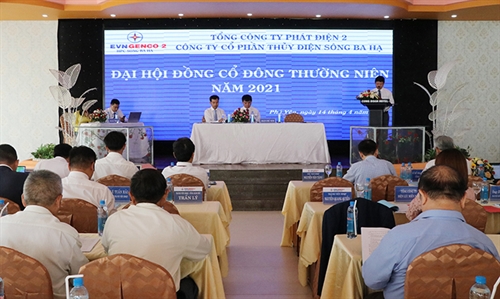Limited liability companies (LLCs) and joint stock companies (JSCs) remain the two forms of companies that are most commonly used in practice in Vietnam. Sometimes, the choice may be difficult for a foreign investor, especially when he/she/it wants to cooperate with a local investor to set up a new company. This article provides an overview of the legal framework relating to LLCs and JSCs and suggests some practical inputs for reflection with respect to this topic.[1]
Legal forms of joint venture companies
There is no requirement under Law 59/2020/QH14 on Enterprises dated June 17, 2020, which was revised in 2022 (the LOE), and Law 61/2020/QH14 on Investment dated June 17, 2020, regarding the legal form of joint venture companies.
Usually, such a company will be created in the form of an LLC or a JSC.
Attention should be paid to specialized laws regulating the field at stake. For instance, a company providing accounting services may not take the form of a JSC but multiple-member LLC, partnership or sole proprietorship (Article 59.1 of Law 88/2015/QH13 dated November 20, 2015, on Accounting, as revised in 2019).
For a company operating in the real estate business, Law 66/2014/QH13 on Real Estate Business dated November 25, 2014, does not provide any specific legal form for companies operating in the real estate business.
 |
| The launching ceremony of THACO Industries in THACO Chu Lai industrial park, Quang Nam province, on December 17, 2022__Photo: Tran Tinh/VNA |
Overview of multiple-member LLCs and JSCs
LLCs
Under Article 46 of the LOE, LLCs should include LLCs with two members or more (multiple-member LLCs) and single-member LLCs. A multiple-member LLC is an enterprise with two to fifty members, both organizations and individuals. To the extent that they contribute capital to the enterprise, members are responsible for the debts and obligations of the enterprise. A multiple-member LLC is considered a legal entity as of the date of issuance of its enterprise registration certificate (ERC). A multiple-member LLC may not issue shares, except where it is transformed into a joint stock company. On the other hand, this type of company may issue bonds in accordance with the LOE and other relevant laws.
Regarding capital contribution, Article 47 of the LOE provides that when registering the establishment of a multiple-member LLC, the company’s charter capital is the total value of the capital contribution portions the members have agreed to contribute to the company and shall be recorded in the company’s charter. Members are required to contribute capital to the company in full and in the type of assets as undertaken when registering the establishment of an enterprise, within 90 (ninety) days following the issuance of the ERC, excluding the period of transporting or importing assets contributed as capital as well as carrying out administrative procedures for converting ownership of assets. A member has rights and obligations in proportion to the amount of capital contribution he/she/it has made. If over 50 (fifty) percent of the other members agree, a member may contribute capital to the company in another type of asset other than the assets undertaken.
Where a member fails to contribute capital or fails to pay in full the capital contribution portion as undertaken upon expiration of the above period:
- The member who fails to pay the capital contribution as undertaken shall automatically cease to be a member of the company;
- If the member does not make the capital contribution in full as undertaken, he/she/it has the right in proportion to the paid-in capital contribution;
- The capital contribution portion not yet paid by the member shall be offered for sale in accordance with a resolution or decision of the Members’ Council.
Regarding the rights of members of the Members’ Council, Article 49.1 of the LOE provides that shares in a multiple-member LLC confer upon its members the following rights:
- To attend meetings of the Members’ Council, discuss, make recommendations and vote on matters within the competence of the Members’ Council;
- To have the number of votes in proportion to their capital contribution portions, except the case specified in Article 47.2 of the LOE;
- To have profits distributed in proportion to their capital contribution portions after the company has paid taxes in full and fulfilled all other financial obligations in accordance with law;
- To be divided with the remainder of the value of assets of the company in proportion to their capital contribution portions upon dissolution or bankruptcy of the company;
- To be given priority in making additional capital contributions to the company upon any increase of charter capital of the company;
- To dispose of their capital contribution portions by way of assignment of the whole or part of their capital contribution portions, or by gift giving or another method in accordance with law and the charter of the company;
- To initiate legal action regarding civil liability in their own names or in the name of the company against the Chairman of the Members’ Council, the Director or Director General, the at-law representative or other managers in accordance with Article 72 of the LOE; and,
- Other rights provided by the LOE and in the charter of the company.
- Furthermore, under Article 49.2 of the LOE, a member or a group of members holding at least 10 percent of the charter capital or a smaller percentage as specified in the charter of the company has the following rights:
- To request a meeting of the Members’ Council to be convened to deal with issues within its authority;
- To inspect, sight or refer to transaction monitoring records, accounting books and annual financial statements;
- To inspect, sight, consult or copy the register of members, minutes of meetings, resolutions and decisions of the Members’ Council and other documents of the company; and,
- To request a court to cancel a resolution or decision of the Members’ Council within 90 (ninety) days from the date of closing of a meeting of the Members’ Council if procedures and conditions for holding such meeting or contents of such resolution or decision are incompliant with the LOE and the charter of the company.
The most important rights of a member of a multiple-member LLC appear to be the right to vote and the right to have profits distributed to him/her/it in proportion to his/her/its capital contribution portion.
Under Article 50 of the LOE, members of the Members’ Council have the following obligations:
- To contribute in full and on time amounts of capital as undertaken and to be liable for debts and other property obligations of the company to the extent of their amounts of capital contributed to the company, except the cases specified in Articles 47.2 and 47.4 of the LOE;
- To refrain from withdrawing their capital contribution portions from the company except in circumstances specified in Articles 51, 52, 53, and 68 of the LOE;
- To comply with the charter of the company;
- To observe resolutions and decisions of the Members’ Council;
- To bear personal liability for committing the following acts in the name of the company: (i) breach of the law; (ii) conduct of business or other transactions not in the interests of the company, thereby causing loss to other persons; (iii) premature payment of debts in case the company is likely to be in financial danger; and,
- Other obligations as specified in the LOE.
- A multiple-member LLC must have its own Members’ Council, Chairman and Director or Director General.
- A multiple-member LLC is a state-owned enterprise as specified in Article 88.1.b of the LOE and any subsidiary of a state-owned enterprise as specified in Article 88.1 of the LOE must have an Inspection Committee; other cases shall be decided by the company.
- A multiple-member LLC must have at least one legal representative holding the position of Chairman of the Members’ Council or Director or Director General. If its charter does not contain any relevant provision, then the Chairman of the Members’ Council is the at-law representative of the company.
The Members’ Council has the following rights and responsibilities under Article 55.2 of the LOE:
- To make decisions on annual business plans and developmental strategies of the company;
- To make decisions on any increase or reduction of the charter capital and on the timing and method of raising additional capital; to make decisions on issuance of bonds;
- To make decisions on projects for investment and development of the company; and decisions on market development, marketing and technology transfer solutions;
- To approve lending and borrowing agreements, contracts for sale of assets and other contracts as stated in the charter of the company and valued at 50 percent or more of the total value of assets recorded in the most recent financial statements of the company or a smaller percentage of value as stated in the charter of the company;
- To elect or remove from office the Chairman of the Members’ Council; to make decisions on the appointment or removal from office of, signing and termination of contracts with, the Director or Director General, Chief Accountant, inspectors and other managers as stated in the charter of the company;
- To make decisions on salary, remuneration, bonus and other benefits for the Chairman of the Members’ Council, Director or General Director, Chief Accountant and other managers as stated in the charter of the company;
- To approve annual financial statements, plans on use and distribution of profits or plans on handling of losses of the company;
- To make decisions on the organizational and managerial structure of the company;
- To make decisions on the establishment of subsidiaries, branches and representative offices of the company;
- To make amendments or supplementations to the charter of the company;
- To make decisions on reorganization of the company;
- To make decisions on dissolution or petition for bankruptcy of the company; and,
- Other rights and obligations provided by the LOE and the charter of the company.
JSCs
A JSC is a company defined under Article 111.1 of the LOE as follows:
- The charter capital is divided into equal pieces known as shares;
- Shareholders may be legal entities or natural persons, with the minimum of three shareholders and the maximum number of shareholders unlimited;
- Shareholders are only responsible for debts and other property obligations of the company to the extent of the capital invested in it.
Regarding capital contribution, under Article 112 of the LOE, the charter capital of a JSC means the total aggregate par value of shares of all classes which have been sold. Upon the registration of the establishment of a JSC, its capital is the total aggregate par value of shares of all classes which have been registered for subscription and stated in its charter.
Regarding shares in a JSC, under Article 114 of the LOE, a JSC shall issue ordinary shares and may provide preference shares. Those preference shares include:
- Redeemable preference shares;
- Dividend preference shares;
- Voting preference shares; and,
- Other preference shares as stated in its charter and in the securities legislation.
Article 120.2 of the LOE requires founding shareholders, when registering the JSC, to collectively register subscribing to at least 20 percent of the total number of ordinary shares that may be offered for sale.
Under Article 135.2 of the LOE, dividends on ordinary shares shall be determined on the basis of realized net profits and dividend payment shall be based on profits retained by the company. A JSC may pay dividends on ordinary shares only when it satisfies all the following conditions:
- It has fulfilled its tax obligation and other financial obligations;
- It has allocated income to all necessary funds and made up for previous losses in accordance with law and its charter; and,
- Upon payment of all dividends, it remains able to pay its debts and fulfill other due property obligations.
- To attend and express opinions at meetings of the General Meeting of Shareholders and exercise the right to vote directly or through an authorized representative or in other forms provided in the charter of the company and by law; one vote is required for every ordinary share;
- To receive dividend amounts as decided by the General Meeting of Shareholders;
- To be given priority in subscribing for new shares in proportion to ratios of ownership of ordinary shares they hold in the company;
- To freely assign their shares to other persons, except the cases specified in Articles 120.3 and 127.1 of the LOE and other relevant regulations;
- To sight, consult and make an extract of information about names and contact addresses on the list of shareholders with voting rights; to request correction of untruthful information about them;
- To sight, consult and make an extract or copy of the charter of the company, minutes of meetings and resolutions of the General Meeting of Shareholders; and,
- Upon dissolution or bankruptcy of the company, to receive part of the remaining assets in proportion to their ratios of ownership of shares in the company.
Under Article 118.3 of the LOE, the rights of redeemable preference shareholders are the same as those of ordinary shareholders, but they do not have the right to vote, the right to attend meetings of the General Meeting of Shareholders or the right to nominate candidates to the Board of Directors and the Inspection Committee.
Regarding dividend preference shares, under Article 117.1 of the LOE, a dividend preference share is a share for which a dividend is paid at a rate higher than that paid for an ordinary share or at an annual fixed amount. Annually distributed dividends include fixed dividends and bonus dividends. Fixed dividends do not depend on business results of the company. The specific amount of fixed dividends and method for determination of bonus dividends are specified in dividend preference share certificates.
Furthermore, upon the dissolution or bankruptcy of the company, dividend preference shareholders may receive part of the remaining assets in proportion to their ratios of ownership of shares in the company after the company has paid in full its debts and redeemable preference shares (Article 117.2.b of the LOE).
They also have other rights as those of ordinary shareholders but they do not have the right to vote, the right to attend meetings of the General Meeting of Shareholders or the right to nominate candidates to the Board of Directors and the Inspection Committee, except the case of voting in a move to adversely vary the rights and duties set out in the shares (Article 117.3 of the LOE).
Regarding voting preference shares, Article 116 of the LOE provides:
- A voting preference share is an ordinary share which carries more votes than an ordinary share. The number of votes per voting preference share is stated in the charter of the company.
- Holders of voting preference shares have rights other than those of ordinary shareholders but may not assign their shares to other persons, except the case of assignment under a legally effective court judgment or decision or the case of inheritance.
Shareholders have other rights, including:
- The right to assign their shares (Article 127.1 of the LOE);
- The right to use their shares as security (Article 15 of Decree 21/2021/ND-CP dated March 19, 2021, guiding in detail the implementation of the Civil Code’s provisions on secured transactions);
- The right to donate some or all of their shares to other people or organizations or use them to pay off debts. A person or an organization that receives a gift or debt payment in the form of shares becomes a shareholder of the company (Article 127.5 of the LOE);
- Where an individual shareholder dies, the heir of such shareholder under a will or by law will become a shareholder of the company (Article 127.3 of the LOE);
- The right (of a shareholder or shareholders owning at least 1 percent of the total ordinary shares) to take legal action on his/her/their own name(s) or on behalf of the company against a member of the Board of Directors or the Director or Director General of the company (Article 166 of the LOE);
- Under Article 115.2 of the LOE, a shareholder or shareholders holding at least 5 percent of the total ordinary shares in the company or another smaller percentage stated in the charter may: (i) request the calling of a meeting of the General Meeting of Shareholders; (ii) sight, consult and make an extract of meeting minutes, resolutions and decisions of the Board of Directors, mid-year and annual financial statements, reports of the Inspection Committee, and contracts and transactions that must be approved by the Board of Directors and other data not relating to business secrets of the company, and (iii) request the Inspection Committee to inspect specific issues relating to the management of the operation of the company when necessary;
- Within 90 (ninety) days after receiving a resolution or minutes of a meeting of the General Meeting of Shareholders or minutes of results of the counting of votes or written opinions of members of the General Meeting of Shareholders, a shareholder or shareholders holding at least 5 percent of the total ordinary shares or another smaller percentage stated in the charter may request a court or an arbitration to cancel the whole or part of the resolution of the General Meeting of Shareholders if: (i) the procedures for convening the meeting and issuing the decision of the General Meeting of Shareholders seriously violate the LOE and the charter of the company; or (ii) the content of the resolution breaches the law or the charter of the company (Article 151 of the LOE).
Under Article 119 of the LOE, shareholders have the following obligations:
- To pay in full and on time for the shares undertaken to be subscribed;
- To refrain from withdrawing the ordinary share capital from the company in any form;
- To comply with the charter and the internal management rules of the company;
- To observe resolutions and decisions of the General Meeting of Shareholders and the Board of Directors;
- To keep confidential information provided by the company in accordance with the company charter and law, and to use only information provided in order to exercise and protect their lawful rights and interests, and to refrain from distributing, copying or sending such information to other organizations or individuals; and,
- Other obligations as specified by the LOE and the charter of the company.
There are three organizational and managerial models for JSCs that are recognized under Article 137.1 of the LOE.
The first model consists of a General Meeting of Shareholders, a Board of Directors, an Inspection Committee and a Director or Director General. This is the most popular model.
The second model consists of a General Meeting of Shareholders, a Board of Directors, and a Director or Director General (an Inspection Committee is not required) if the company has less than 11 shareholders and the institutional shareholders together own less than 50 percent of the total shares of the company.
The last model consists of a General Meeting of Shareholders, a Board of Directors and a Director or Director General provided that at least 20 percent of the total members of the Board of Directors are independent members and there must be an Auditing Committee under the Board of Directors. The organizational structure, functions and duties of the Auditing Committee are regulated in the company charter or operational rules issued by the Board of Directors.
Regarding independent members, Article 155.2 of the LOE stipulates:
“Unless otherwise provided by the law on securities, an independent member of the Board of Directors defined in Article 137.1.b of this Law must satisfy the following criteria and conditions:
- Not being a person currently working for the company, the parent company or any subsidiary of the company; or not being a person having worked for the company, the parent company or any subsidiary of the company for at least three years;
- Not being a person who is currently entitled to salary or remuneration from the company, except allowances which members of the Board of Directors are entitled to in accordance with regulations;
- Not being a person whose spouse, natural parent, adoptive parent, offspring, adopted child or sibling is a major shareholder of the company, or a manager of the company or its subsidiary;
- Not being a person directly or indirectly owning at least 1 percent of the total voting shares in the company;
- Not being a person who was a member of the Board of Directors or the Inspection Committee of the company for at least five years, except the case of appointment for two consecutive terms”.
Under Article 138.2 of the LOE, the General Meeting of Shareholders has the following rights and obligations:
- To pass the developmental directions of the company;
- To make decisions on classes of shares and total number of shares of each class which may be offered for sale; to make decisions on annual dividend rate for each class of shares;
- To elect or remove from office members of the Board of Directors and inspectors;
- To make investment decisions or decisions on sale of assets valued at 35 percent or more of the total value of assets recorded in the most recent financial statements of the company, except where the charter of the company states another percentage or value;
- To make decisions on amendments or supplementations to the charter of the company;
- To approve annual financial statements;
- To make decisions on redemption of more than 10 percent of the total number of shares of each class already sold;
- To examine and deal with breaches by members of the Board of Directors and inspectors which cause damage to the company and its shareholders;
- To make decisions on reorganization and dissolution of the company;
- To decide on the budget or total remuneration, bonuses and other benefits of the Board of Directors and the Inspection Committee;
- To approve internal governance rules and operational rules of the Board of Directors and of the Inspection Committee;
- To approve the list of independent auditing firms and to decide on an independent auditing firm to conduct inspection of activities of the company, and to remove the independent auditor when deeming it necessary; and,
- Other rights and obligations specified by the LOE and the charter of the company.
The Board of Directors has between three and 11 members. The charter of the company must specify the number of members of the Board of Directors (Article 154.1 of the LOE). The term of office of its members must not exceed five years and they may be re-elected for an unlimited number of terms.
One individual may be elected as an independent member of the Board of Directors for no more than two consecutive terms of office (Article 154.2 of the LOE).
Where the company has only one at-law representative, the Chairman of the Board of Directors or the Director or Director General shall act as the at-law representative of the company (Article 137.2 of the LOE).
Under Article 153.2 of the LOE, the Board of Directors has the following rights and obligations:
- To make decisions on medium-term developmental strategies and plans, and on annual business plans of the company;
- To recommend classes of shares and total number of shares of each class which may be offered for sale;
- To make decisions on sale of unsold shares within the number of shares of each class which may be offered for sale; to make decisions on raising of additional funds in other forms;
- To make decisions on selling prices of shares and bonds of the company;
- To make decisions on redemption of shares in accordance with Articles 133.1 and 133.2 of the LOE;
- To make decisions on investment plans and investment projects within the authority and limits provided by law;
- To make decisions on market expansion, marketing and technology transfer solutions;
- To approve contracts for purchase, sale, borrowing, lending and other contracts and transactions valued at 35 percent or more of the total value of assets recorded in the most recent financial statements of the company, except where the charter of the company states some other percentages, and contracts and transactions within the decision-making authority of the General Meeting of Shareholders as specified in 167.1 and 167.3 Article 138.2.d and Articles 167.1 and 167.3 of the LOE;
- To elect or remove from office the Chairman of the Board of Directors; to appoint, remove from office, and sign contracts or terminate contracts with the Director or Director General and other key managers as specified in the charter of the company; to make decisions on salaries, remuneration, bonuses and other benefits of such managers; to appoint authorized representatives to join the Members’ Councils or General Meetings of Shareholders of other companies, and to make decisions on amounts of remuneration and other benefits of such persons;
- To supervise and direct the Director or Director General and other managers in their work of conducting the day-to-day business of the company;
- To make decisions on the organizational structure and internal management rules of the company, to make decisions on establishment of subsidiaries, branches and representative offices and the capital contribution to or purchase of shares from other enterprises;
- To approve agenda and contents of documents for meetings of the General Meeting of Shareholders; to convene meetings of the General Meeting of Shareholders or to obtain opinions in order for the General Meeting of Shareholders to pass resolutions;
- To submit annual financial statements to the General Meeting of Shareholders;
- To recommend dividend rates to be paid, to make decisions on time limit and procedures for payment of dividends or for handling losses incurred in the business operations;
- To recommend reorganization or dissolution of the company, or to request bankruptcy of the company; and,
- Other rights and obligations provided or specified by the LOE and the company charter.
The Director or Director General shall manage the day-to-day business of the company, submit to supervision by the Board of Directors and take responsibility to the Board of Directors and before law for the exercise of his/her delegated powers and the performance of his/her obligations (Article 162.2 of the LOE).
Under Article 162.3 of the LOE, the Director or Director General of a JSC has the following powers and obligations:
- To make decisions on issues relating to the day-to-day business of the company which fall beyond the authority of the Board of Directors;
- To organize the implementation of resolutions and decisions of the Board of Directors;
- To organize the implementation of business plans and investment plans of the company;
- To make recommendations with respect to the plan on organizational structure and internal management rules of the company;
- To appoint or remove from office managerial positions in the company, except those falling under the authority of the Board of Directors;
- To make decisions on salaries and other benefits for employees of the company, including managers who may be appointed by him/her;
- To recruit employees;
- To make recommendations on plans on dividend payment and on handling of business losses; and,
- Other powers and obligations provided by law, specified in the charter of the company and resolutions and decisions of the Board of Directors.
Pros and cons of multiple-member LLCs and JSCs: a comparison
| Multiple-member LLCs | JSCs | |
| Number of members | 2-50 (Article 46.1 of the LOE) |
|
| Capital mobilization |
| A JSC may issue shares, bonds and other types of securities. (Article 111.3 of the LOE) |
| Organizational and managerial structure |
|
|
| Assignment of capital contribution portions | In accordance with the following provisions, a member of a multiple-member LLC may assign a portion of its capital contribution to other individuals as follows: (a) Making such a portion of the capital contribution available for sale to all other members in proportion to their respective capital contribution portions in the company, subject to the same terms as the offer; (b) When non-members do not purchase or do not purchase in full within 30 days from the date of the offer, assigning to non-members on the same terms as the offer applies to other members as stated at Point (a) above. (Article 52 of the LOE) ⇒ more restricted. | Within the period of three years from the date of grant of the ERC to the company, ordinary shares of a founding shareholder may be freely assigned to other founding shareholders, and may only be assigned to persons other than founding shareholders upon approval of the General Meeting of Shareholders (Article 120.3 of the LOE). The charter of the company may provide restrictions on assignment of shares. Where the charter of the company provides restrictions on assignment of shares, such restrictions may only become effective if they are specified in the corresponding share certificates. ⇒ more flexible. |
Pros and cons of multiple-member LLCs:
| Pros | Cons |
| The ability to raise capital and expand the business is limited because shares cannot be issued. |
| Capital transfer conditions are rigorous, so the owners can easily control the change of members, limiting the penetration of strangers into the company. | Limited to 50 members; as a result, the company may miss some opportunities from other investors. |
Pros and cons of JSCs:
| Pros | Cons |
| The ability to raise capital is very high and flexible through the offering of all kinds of shares and offering of shares to the public. At present, this is the only type that can issue shares to raise capital. |
|
| Simple share transfer procedures, plus an unlimited number of shareholders are factors that attract many individuals or organizations to easily participate in contributing capital to JSCs. | It is more difficult to make a strategic decision whether it is about corporate management or business because it has to go through the Board of Directors, the General Meeting of Shareholders. ⇒ the possibility that the company will miss business opportunities. |
| Have the right to list and trade shares on the stock exchanges. | Confidentiality in business and finance is limited because the company is required to disclose and report to shareholders at annual meetings and make public a great amount of information. |
In light of the above, the choice of an appropriate structure depends on various factors. There is no one size that fits all forms of business organization. If the number of capital contributors is small and those may trust each other, a multiple-member LLC appears to be a good option. An LLC lets you take advantage of the benefits of both the JSC and partnership business structures. If the joint venture wants to expand the business, a JSC should be selected because it can inter alia raise a large amount of capital by issuing shares and other securities.-









